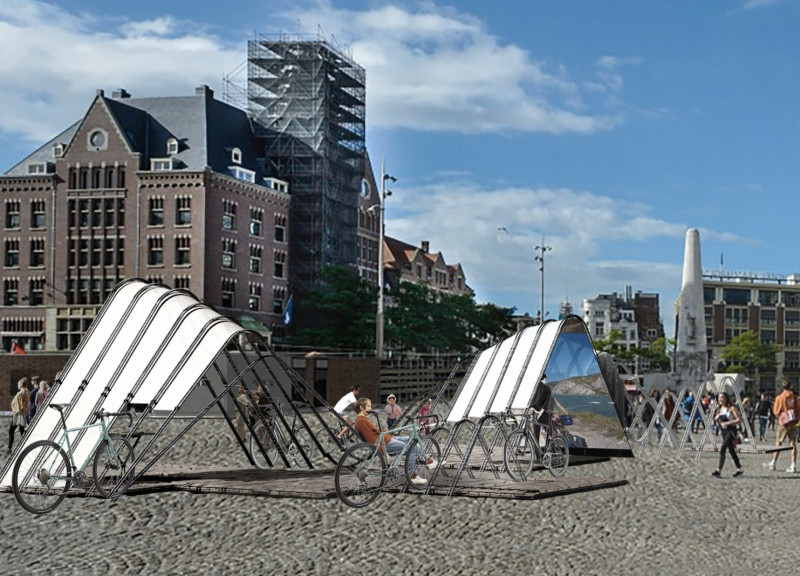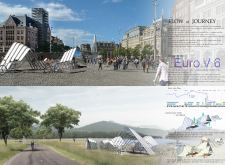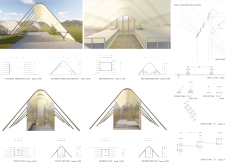5 key facts about this project
The project functions as a multi-purpose facility, allowing users to engage with their surroundings in a dynamic manner. Key features of the design include structures that offer resting spaces, charging points for electric bikes, and information kiosks to educate users about local ecology. The architectural choices prioritize user experience, ensuring that these areas encourage social interaction and community building among cyclists and pedestrians alike.
Architectural Integrity and Material Choices
The architectural integrity of "Flow of Journey" is maintained through the use of materials that enhance both performance and sustainability. Key materials in the project include glass for transparency and natural light, steel frames for structural support, textile membranes for protection from the elements, and recycled materials wherever feasible. The pavilions are characterized by their curved forms, which provide not only aesthetic appeal but also functional benefits, such as improved rainwater management and enhanced structural efficiency.
A unique aspect of this project is its adaptability to diverse environments. The modular design allows for flexibility in individual pavilion configurations, catering to varying needs across different locations. This adaptability is essential in urban planning, facilitating a seamless transition between different types of landscapes while maintaining a cohesive architectural language.
Interconnectivity and User-Centric Design
"Flow of Journey" emphasizes interconnectivity between the built environment and nature. The design encourages cyclists to experience the surrounding landscape by positioning the pavilions at strategic viewpoints. Green roofing systems feature prominently, promoting biodiversity and minimizing the urban heat island effect. The implementation of solar panels and rainwater harvesting systems further supports the architectural commitment to sustainability.
The user-centric approach is evidenced by the careful spatial planning that prioritizes ease of movement and accessibility. Each pavilion incorporates shaded areas and benches, allowing for varied durations of stay and levels of engagement with the environment. This thoughtful arrangement fosters a sense of community and encourages outdoor activity, aligning with contemporary urban mobility goals.
Explore the project presentation for more details, including architectural plans, sections, designs, and ideas that illuminate the innovative aspects of "Flow of Journey." Review these elements to gain deeper insights into the architectural principles and design strategies employed in this project.


























